By comparison to its competition, this category page is good.
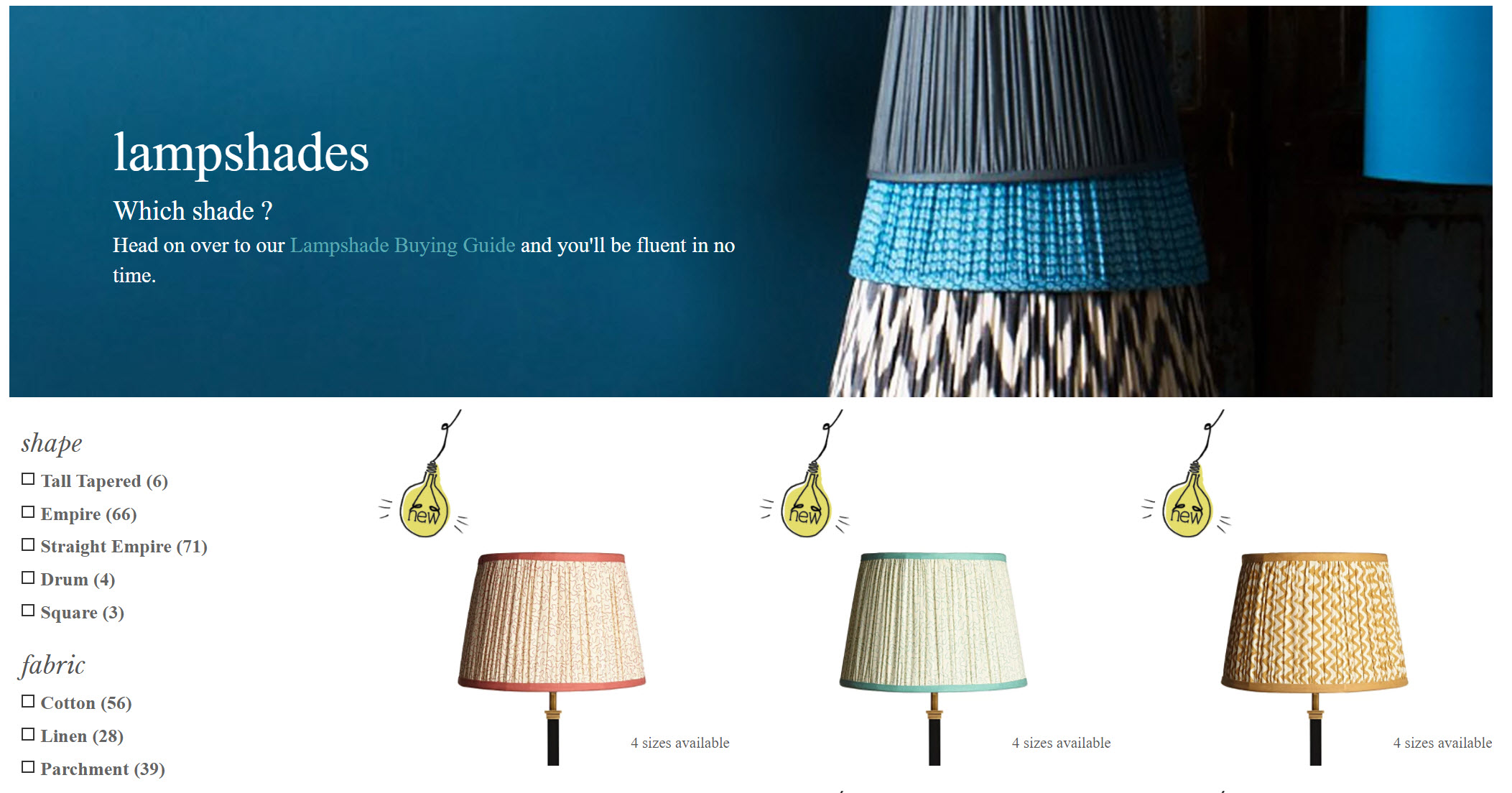
We know that buyer’s guide links are helpful converters – nevertheless this page is more than a little thin. Which leaves a door wide open for new entrants in the search results.
It’s a common mistake and one we encounter quite often. Builtvisible has qualified out clients who only want links when they clearly have rendering, site speed, relevancy and / or internal links issues. You should always start with an audit. Always.
There are swathes of commercially orientated queries in Google’s search results where the top 6 pages have no, or very very little copy on them. And you can compete with that easily if you’re willing to find a design solution to adding more content to your pages.
Lots of the right content clearly works. As much as you could go a bit too far (or lose some friends in the design and UX team) this works:
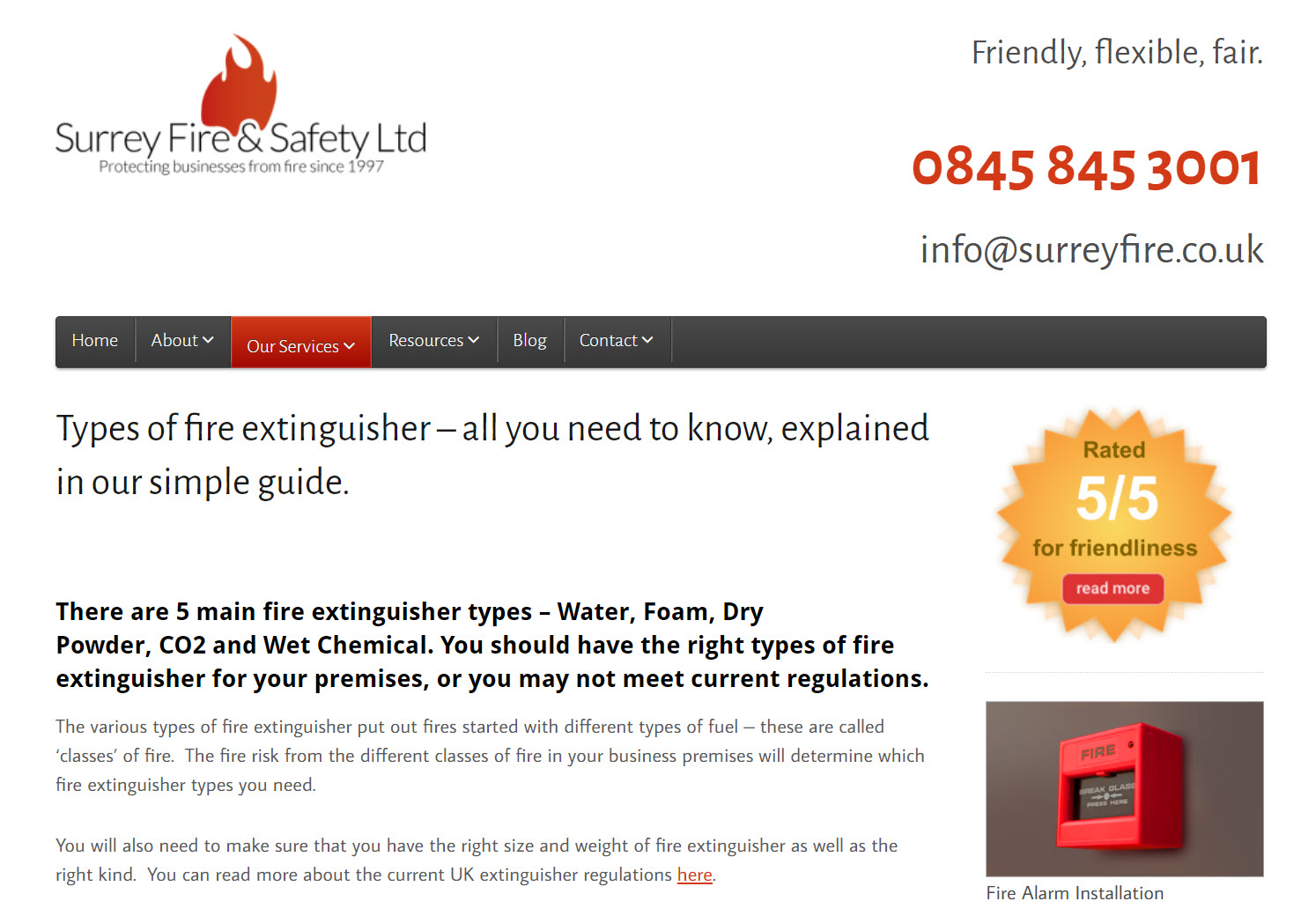
This page ranks 1st for “fire extinguishers” with very few links. Those few links are a consequence of the ranking position (judging by the history of the page in ahrefs and the type of links acquired).
Anyway. Content on category pages is good. I’m writing that from the experience of working with an online retailer who has extremely limited budget and significantly lower numbers of links (although, far higher quality I might add!) than their bigger competitors. We’ve had to work on the things that we can change cheaply and quickly.
What I’ve learned is that even when you’re small, there’s a method to level the playing field. And, it’s outrageously simple.
The chart below is the product of ongoing work with that small retail website, where the main emphasis has been placed on developing category pages.
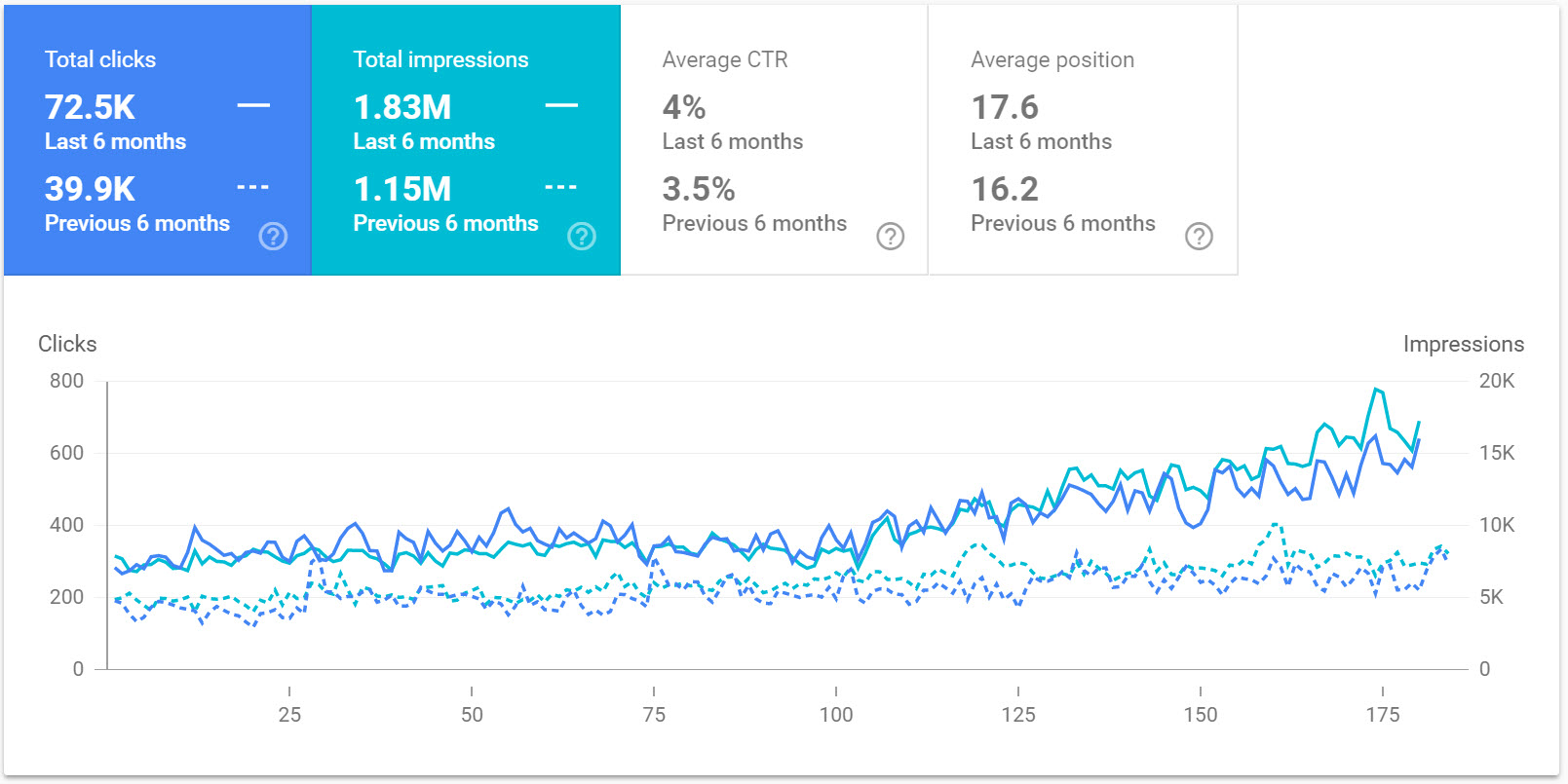
And here is the performance of a single category page:

All on a site with 1/10th of the link volume that would normally be the prerequisite to competing in the space.
So, there’s hidden opportunity. And the opportunity is sizeable. Yet category pages frequently get the least attention in the Marketing department despite:
- Being the most important navigational hub to the products we’d like to show our customers.
- Having high head of tail / mid tail traffic generating capabilities.
- Being a great place to make visitors aware of supporting content.
- Being a good starting point for personalised recommendations.
While these points are simple, they’re true. Which leaves retail categories an exciting quick win space for an SEO to make a difference.
As is the fact that most of the time, these pages are ignored past the classic brief that 100-200 words of “unique” copy is enough to get the page to rank well. Or, there’s no copy on the page at all. If I was an in-house SEO at a retailer I’d make it my life’s work to change this view entirely.
So, Retailers. Here’s how I would improve your category pages before building any links.
How to improve the copy on your category pages properly
I’m not a fan of “write 100 words of unique content per page”. That’s a horrendous brief. Don’t do that. To write some genuinely nice words on a category page, I gather some raw information first:
How are products on display selected at the retailer?
This can provide some insight into the values of the team. It also adds value to the experience; “we’ve spent an awfully long time sourcing these items, so you don’t have to.” You can just very easily ending up writing “carefully selected” as I so often do; but “carefully selected from emerging manufacturers at art & fashion shows across the globe” has a nice ring to it, too.
What brands are featured in this category?
Interestingly, this can drive additional traffic as the purchase intent may be a little further down the funnel. I may be searching for “Fire Extinguishers” but I could be looking for a “Lifeline Fire Extinguisher”. If your copy mentions the brands you stock and the top brands are in your title element, you’ll probably rank.
You’ll certainly end up seeing the impressions data in Search Console which I think is useful as it informs the next iteration of page development.
What is the top seller or can you recommend an item in the inventory?
This is a simple but useful idea. Can you display a thumbnail for a product recommendation in your category copy? It’s a smart way to grab some content from a product page, give it a mild rewrite and place it in the category copy.
What keywords are you targeting and what does the category page already rank for in search console?
When you’re embarking on a rewrite, you should always drill down to the URL in Search Console’s performance analytics. There will always be search terms that have demand but generate no clicks because you rank in position 75 or something.
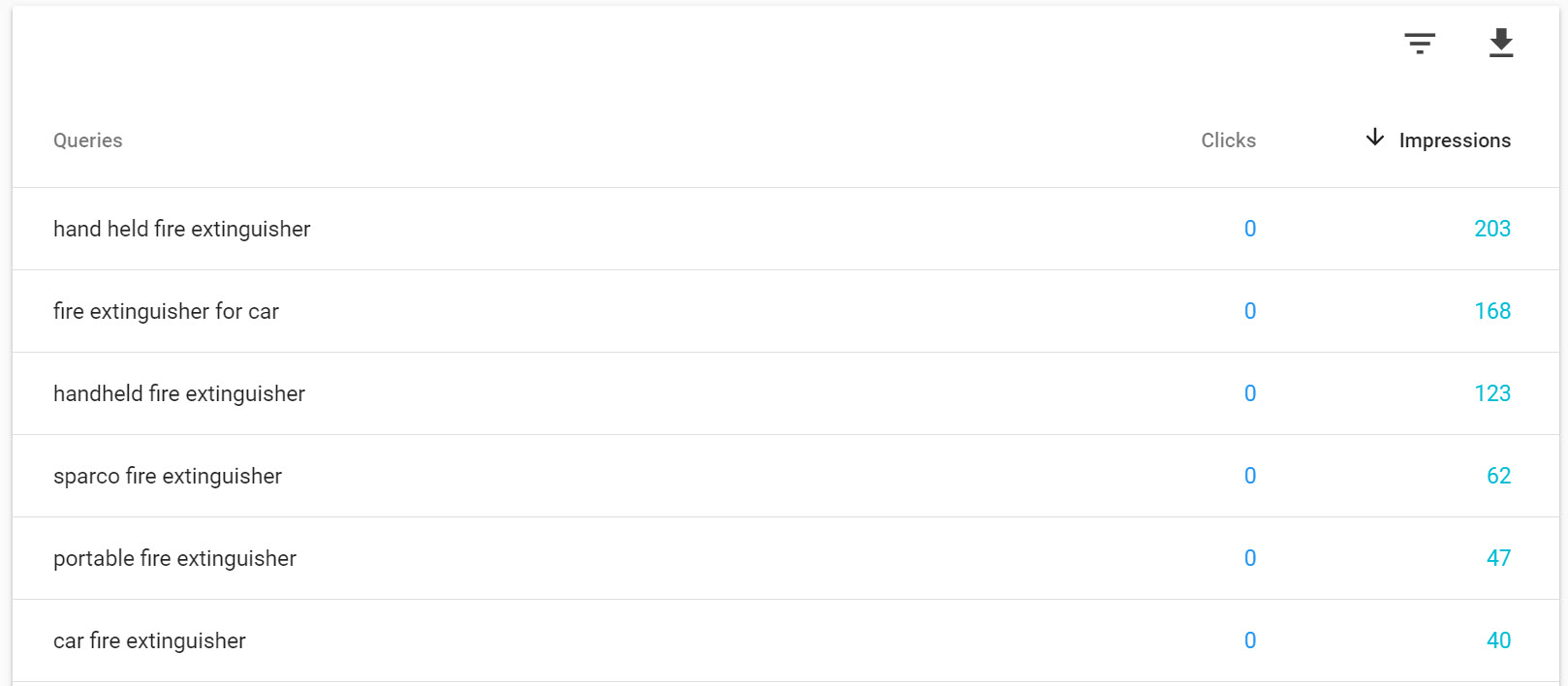
And while you’re in there, you might want to take advantage of the comparison query feature, just so you can be sure that you’re targeting the right phrases:

What are the related search queries to those keywords?
You could use lots of keyword suggestion tools and even TF*IDF to come up target terms for your copy but I find, for scale and simplicity you can sometimes go too far.
If you’ve got reasonable data from other ranking pages then you’ve easily got enough to get going.
The top ranking URL for a query can give up lots of useful insight via SEMrush:
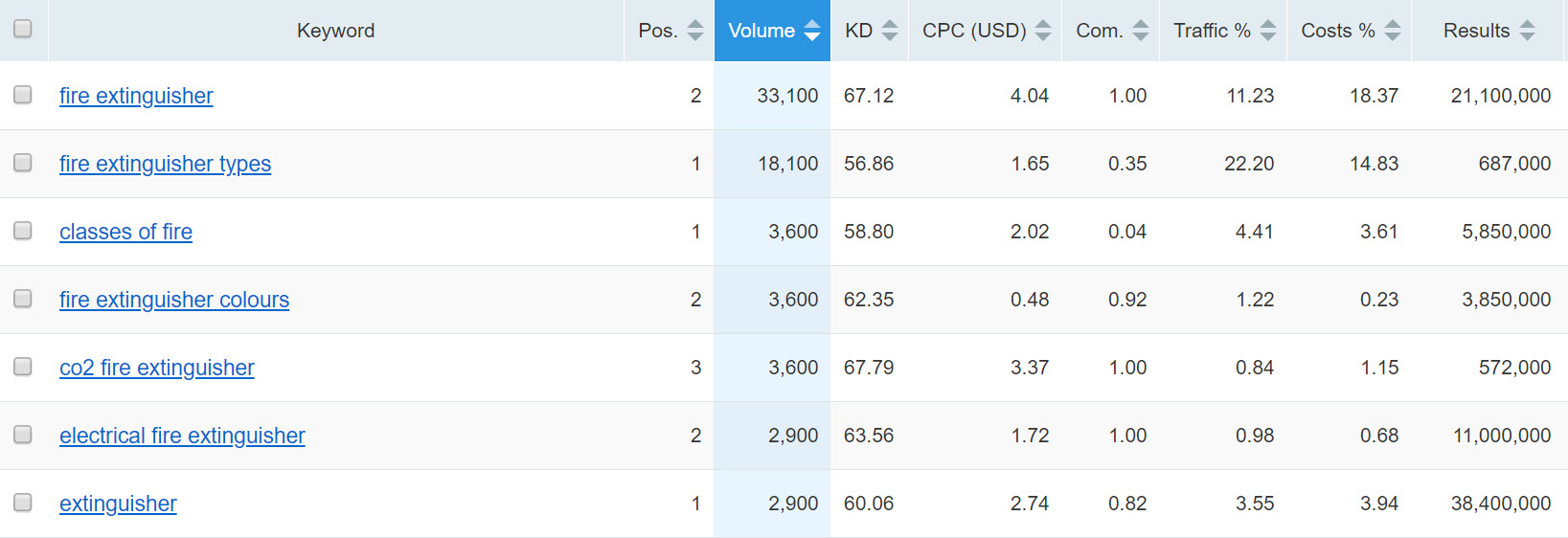
As can the “People Also Search For” section after a bounce on a search snippet:
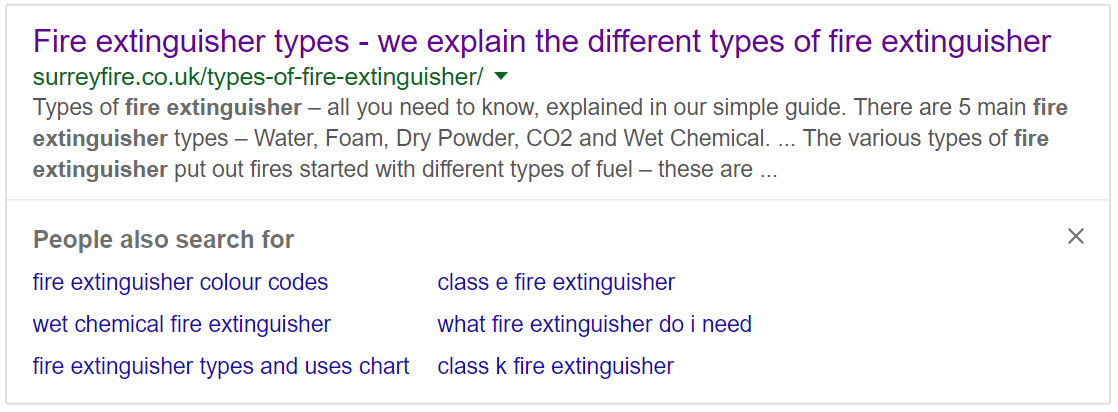
And related searches is always worth a look:

What other information and links can I include on this page?
Gather information that might be helpful for conversion, for example returns and delivery policy, links to product buyer’s guides (you have those?), video embeds and so on.
Once you’ve put all of this information together, you’re in a good place to write well for a category page. Good copy isn’t the be all and end all of SEO but it can have a huge impact, and it’s highly underused as a tactic in my opinion. Don’t forget to update the meta description and title too!
Can I consolidate some categories, remove pages that are close duplicates and improve my internal links?
Finally, it’s worth mentioning that having too many similar category pages is a very bad thing. If you can remove some categories, move the newly orphaned products to their new home and improve filtering to make sure they’ll get some eyeballs on them then in my view that’s a good thing.
And finally, Submit to Google, Test and Iterate
Once you’ve updated a page, it doesn’t hurt to submit the page to Fetch as Googlebot. A change in rankings because of a major page update can happen very quickly (within a day or two does not surprise me anymore). And it’s quite a motivating experience when you’re trying to sell your new methodology to the rest of the team.
By the time you’ve worked through your top categories it’ll be time to interate. As they’ll be new data in search analytics you may find new query opportunities to pursue in the next iteration of your category content.
Hopefully that’s enough food for thought for you to go and try a similar methodology for yourselves. Enjoy!

kodulehe tegemine
Thanks for this information it’s very helpful and important for me.
Tom
Great article! Do you have any thoughts on position of the copy on a page? Above/below the fold, etc?
Thanks!
Christian
Excellent advice.
One thing most great SEO advice forgets to take into consideration, is that many SEO tools aren’t as powerful for smaller languages.
Pages lige ubersuggest and the like will take a keyword, and present suggestions that simply are the keyword followed by city names.
Obviously the suggestionbox in the bottom, the “people might also search for” and google keyword planner are great. But they do provide better results in English, which is not a surprise.
Do you have any thoughts on how to get around that?
Thanks in advance